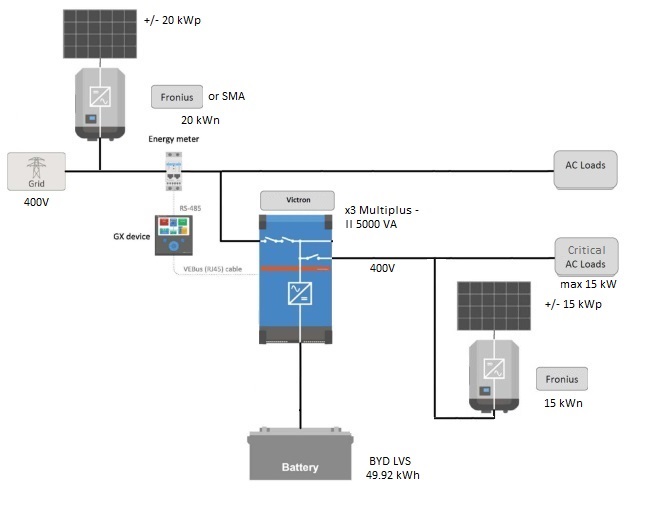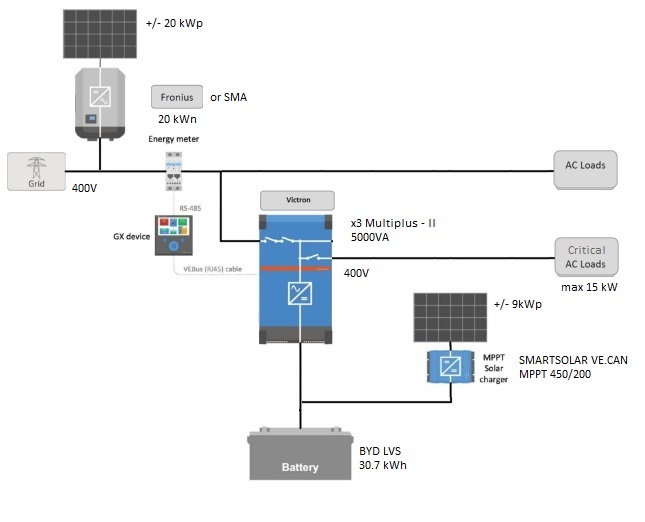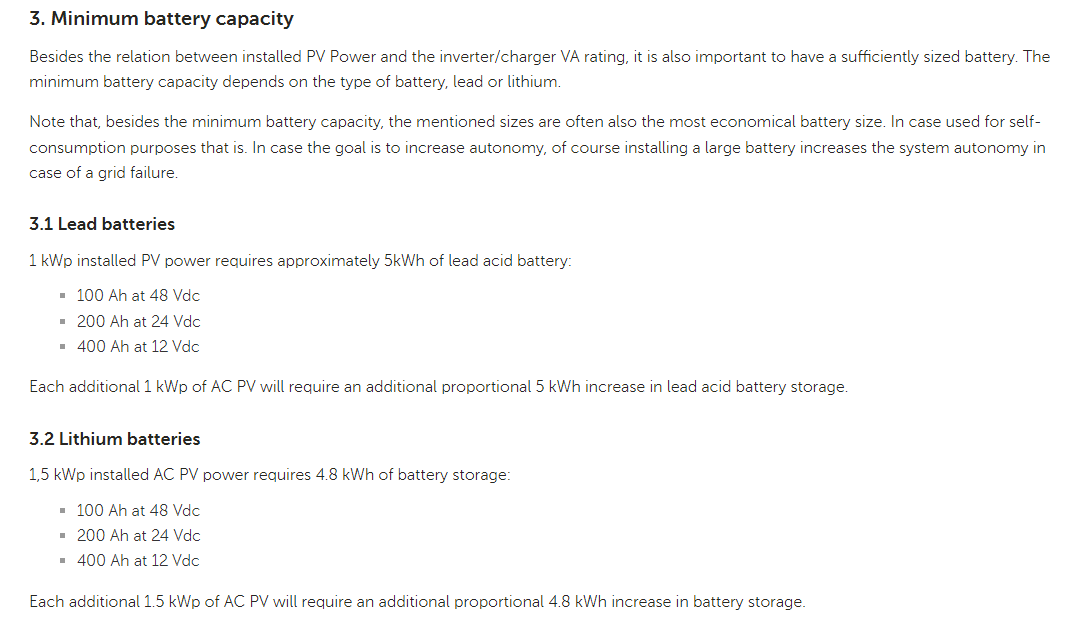Hi! I'm new here on Victron Community. I look forward to doing my bit!
I need to do a new installation for my home and I don't know which kind of equipments would be better. I've two variants, and for both, I've some questions.
System Description:
Installation type 1 (AC Coupling):
In this case, the energy produced by the 20 kW SMA or Fronius inverter, will be distributed between the "secondary" loads and the critical loads. On the other hand, to feed the critical load, I would use a Fronius inverter of 15 kW which, in turn, I would use it to do "AC Coupling" and take advantage of the surplus to charge the batteries.
To do this, I have used the Factor 1.0 rule. For every 1.5 kWp, 4.8 kWh of battery. As the inverter is 15 kW, I must install at least 48 kWh of battery.
For this case, I have the following doubts:
- Will the 20 kW inverter charge the batteries in any way? I think that if it is located where it is, it will not.
- Is it possible to put smaller batteries?
- Would it be necessary to put some other equipment apart from the Color Control?

Installation type 2 (MPPT Regulator):
In this case, as in the previous one, the 20 kW will be distributed between both loads and the charge regulator will be charging the batteries, which in this case I wanted to give it an autonomy of about 2h-3h, in case there was a cut in the network.
Here I have many doubts:
- While the 9 kWp photovoltaic field is delivering energy to the regulator, this energy produced will only serve to charge the batteries or, on the contrary, it will send it to the Victron to reverse the energy and deliver it to the loads instantly as a primary function and charge batteries as a secondary function.
- If the batteries are fully charged, where will that 9 kWp go?
- If the batteries are fully discharged, where will that 9 kWp go?
- If the batteries are at 60-70-80 % of their capacity, where will those 9 kWp go?
- If the secondary loads consume 10 kW, how will the remaining 10 kW from the inverter be consumed?
- If the secondary loads consume 20 kW and the batteries are discharged, how will the critical loads be fed?
- Would it be necessary to put some other equipment apart from the Color Control?

Thanks to everyone!!
Elias Gil.

